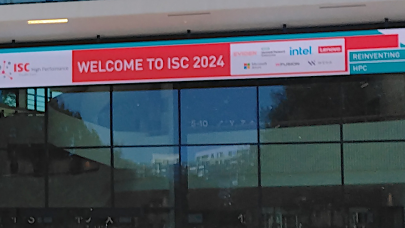July 10, 2023 — Deborah Agarwal has always taken a pragmatic approach to her career. Throughout her life, she had three guiding principles for determining whether she’d accept or stay at a job: Is the work fun? Is the research topic interesting? Will I be working with people I like?
The answer to these questions was a resounding “yes” in 1992 when Agarwal accepted an internship to work with Van Jacobson in Lawrence Berkeley National Laboratory’s (Berkeley Lab’s) Networking Research Group; and again in 1994 when she turned down academic job offers to work with William (Bill) Johnston in the Lab’s Information and Computing Sciences Division.
Now more than three decades since she first arrived as an intern, Agarwal will retire as Director of Berkeley Lab’s Scientific Data Division on July 1. A celebration of her Lab career was held on July 7 in Berkeley.
“Looking back, I’ve really loved the opportunity to live the ethos of Ernest Lawrence’s original plan: big teams working on big problems. I’ve enjoyed immersing myself in team science, and I’m proud of having been able to help revitalize some of that ethos throughout my career at Berkeley Lab,” said Agarwal.
Winding Road Through Engineering
When Agarwal was growing up, many of the engineering fields she would eventually work in (robotics, networking, data science) didn’t exist or were in their infancy, so she never strove for careers in them. Instead, she found her place in these domains by sticking to her three guiding questions.
Although Agarwal came from an engineering family—her father was an electrical engineer at General Motors (GM) Research Laboratories and patented numerous inventions; all her sisters became successful engineers—she didn’t always aspire to be an engineer. But that changed when she was invited to a week-long summer program at the Rensselaer Polytechnic Institute designed to introduce high school students to different engineering disciplines.
That summer, Agarwal was one of 30 students participating in the program. “The University had a big mainframe computer, and we spent the mornings learning to program and playing games on the system. The afternoons were dedicated to exposing us to a particular engineering field: industrial engineering one day, civil engineering the next, electrical, and so on; we’d meet the professors, learn about their research, then visit their Labs. It was very cool,” she said.
After completing the program, she methodically went through the disciplines presented that week and decided to pursue her undergraduate degree in mechanical engineering at Purdue University. Before applying for graduate school, Agarwal joined GM’s advanced engineering staff and put her skills toward helping the company figure out how to quickly and effectively integrate robotics into their automotive assembly line.
“I picked up a lot of computer science skills during my time at GM because I was working on offline programming these robots before they were integrated into the assembly line,” she said.
Agarwal planned to continue with mechanical engineering and automated assembly research when she arrived at UC Santa Barbara for graduate school, but her professor didn’t have any expertise in robotics or manufacturing. His background was in controls theory, so after reading about the challenging problems of fly-by-wire for jets, she decided it’d be fun to work on that. To better understand digital systems, she took an undergraduate course in digital electronics, where she learned things like assembly language programming, digital logic, how to create field programmable gate arrays, etc.

“At that point, I was not enjoying my graduate-level mechanical engineering courses, but this digital electronics course was so much fun. I thought about it for a while and decided to switch my major to electrical and computer engineering,” said Agarwal. “Fortunately, my digital electronics professor was also assistant dean of the UCSB College of Engineering and helped me to switch my major.”
Once she changed her major, Agarwal knew it would be a while before she obtained her Ph.D. So she took an analytical approach to selecting her graduate student research project. “I wanted to like the people I worked with, and I wanted an interesting research topic. After these two criteria, I looked at who had funding, then began doing informational interviews,” she said. “The people who ended up being my professors were in the multicast protocol space, which was a really interesting topic in the early ‘90s, so I decided to do that.”
The pivot into multicast networking eventually led Agarwal to accept an internship in Berkeley Lab’s Network Research Group in 1992, where she spent a month working on—the Multicast Backbone (M-Bone)—with Van Jacobson. In addition to enabling researchers worldwide to collaborate in real-time, throughout the 1990s M-Bone’s early videoconferencing tool was also used to live-stream a Rolling Stones Voodoo Lounge Concert and connect US elementary school students to South Pole researchers for the first time.

Building a Career at Berkeley Lab, “I’ll Leave When It Stops Being Fun”
After earning her Ph.D., Agarwal thought she’d pursue an academic career. She applied for professorships at several universities and even received some offers, but then Berkeley Lab’s Bill Johnston reached out to her with an intriguing project.
“Bill had just gotten a project funded to enable remote experimentation at the Advanced Light Source’s (ALS) beamline 7, and he wanted me to run the project,” said Agarwal. “I was pretty tired after getting my Ph.D., and I knew it would be a lot of work to build an academic career: teaching classes, building up a team of graduate students, and applying for funding. But with this Berkeley Lab job, I’d get to apply my thesis work to a problem; I wouldn’t have to write a proposal; I’d just jump in and do the fun part.”
Building on her graduate work, where she developed a reliable multicast protocol, Agarwal spent the next few years applying her expertise to developing collaborative software tools that allowed researchers at different locations to collaborate on experiments as if they were in the same laboratory. And the ALS’s Spectro-Microscopy Facility Beamline 7.0 at Berkeley Lab was the pilot application for these tools.
In the late 1990s, the Comprehensive Test Ban Treaty Organization asked Agarwal to help them determine if “reliable multicast” technology was a cost-effective way of handling the large amount of data involved in verifying that no nation detonates a nuclear device. For this work, Agarwal was named one of the Top 25 Women of the Web in the May 2000 cover story by Upside magazine.
Once Agawal’s ALS project finished, another exciting opportunity popped up with DOE 2000. At the turn of the millennium, the Department of Energy sought to fund research on technologies essential to supporting collaborations with experiments.
“I felt really well situated for this initiative because I had the experience of working on similar projects at the ALS. So we proposed follow-up work to some tools we developed for the ALS, and we did very well,” said Agarwal. “We got some really fun projects, so instead of racing back to academia, my perspective shifted to ‘I will leave when I stop having fun.’”
To continue reading, please click here.
Source: Linda Vu, Berkeley Lab




























































